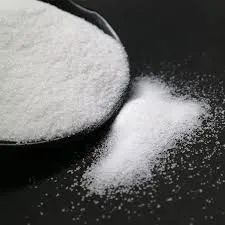Cooling Tower Water Treatment Without Chemicals
Cooling towers are essential components in various industrial processes, responsible for dissipating excess heat into the environment. However, maintaining optimal cooling tower performance often poses significant challenges, particularly regarding water treatment. Traditional chemical treatments can effectively control scaling, corrosion, and biological growth but may also lead to environmental concerns and health risks. In recent years, there has been a growing interest in chemical-free water treatment methods that leverage innovative technologies to enhance cooling tower efficiency while minimizing ecological footprints.
One of the most promising approaches to chemical-free cooling tower water treatment involves the use of advanced filtration systems. These systems can efficiently remove particulate matter, biofilms, and microorganisms from the water, preventing fouling and scaling on heat exchange surfaces. Mechanical filtration methods, such as microfiltration or ultrafiltration, employ membrane technologies to separate contaminants from the water. This not only helps keep the cooling system clean but also reduces the frequency of maintenance and downtime.
Another effective chemical-free treatment method is ozone treatment. Ozone is a powerful oxidizing agent that can effectively eliminate bacteria, viruses, and algae in cooling water. By bubbling ozone gas into the water, operators can harness its antimicrobial properties to maintain a clean system without the need for harsh chemicals. Additionally, ozone breaks down into oxygen, leaving no harmful residues, making it an environmentally friendly option. Regular ozone treatment can significantly lower the biological load in cooling towers, reducing the need for frequent cleaning and chemical interventions.
cooling tower water treatment without chemicals

Ultraviolet (UV) light treatment is also gaining traction as a chemical-free method for cooling tower water treatment. By exposing cooling water to UV light, operators can effectively inactivate pathogens and microorganisms. This method is particularly advantageous because it does not introduce any chemicals into the water, thus ensuring that the water remains safe for subsequent use. UV treatment systems are relatively easy to install and require minimal maintenance, making them an attractive option for many facilities aiming to improve their water treatment practices.
Furthermore, the implementation of biological water treatment systems, such as biofilters, is becoming increasingly popular. Biofilters utilize beneficial microorganisms to naturally break down organic materials and contaminants in cooling water. These systems create a sustainable environment where the microorganisms thrive, thereby enhancing the overall water quality. Regular monitoring and maintenance of biofilters can ensure their effectiveness and longevity, providing a reliable solution for cooling tower water treatment without chemicals.
Incorporating the concept of total water management can also aid in reducing the reliance on chemical treatments. This involves the systematic collection and analysis of water quality data, enabling operators to optimize water usage and treatment practices. By understanding the specific needs of their cooling systems, facilities can make informed decisions about water sources, treatment frequency, and recycling opportunities, all while minimizing chemical usage.
In conclusion, the pursuit of chemical-free cooling tower water treatment solutions is paving the way for more sustainable industrial practices. Through advanced filtration techniques, ozone and UV treatments, and biological filtration systems, operators can effectively maintain cooling systems while minimizing environmental impacts. As industries continue to face increasing regulatory scrutiny and public concern over chemical usage, embracing these innovative methods will not only enhance cooling tower performance but also contribute positively to ecological preservation. Moving forward, the adoption of these approaches will be crucial in the quest for sustainable industrial water management.

